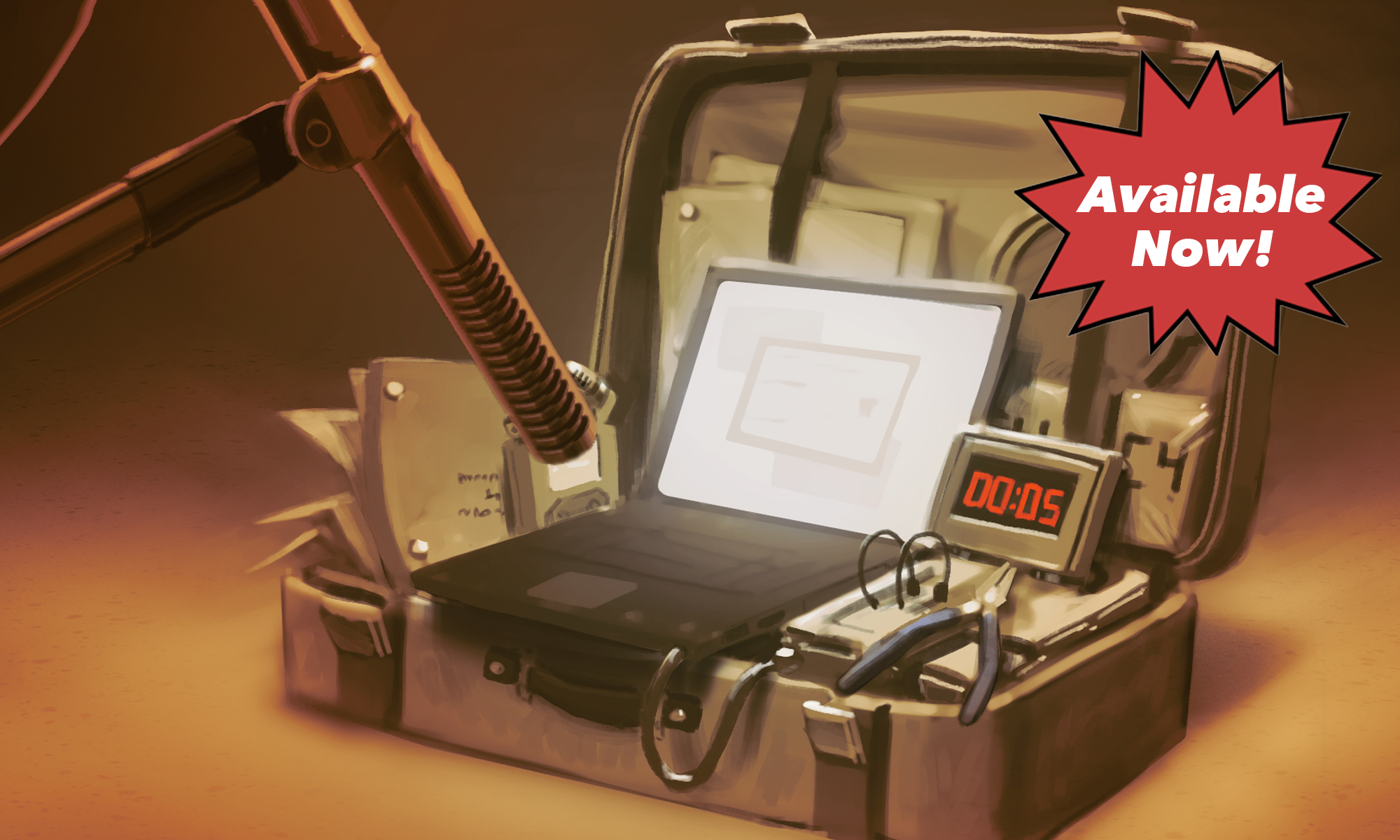Table of Contents:
* = New Section for 2nd Edition
Foreword
Chapter Outline
What is Audio Drama?
Storytelling
- 1. Choosing your Story
- 1.1 Titles
- 1.2 Creating a Compelling Story
- 1.2a Pacing and Tension*
- 1.2b The Outline*
- 1.3 Story Workshop
- 1.4 What’s in a Name?
- 1.4a Character and Story Wrappers*
- 1.4b Natural Character Evolution*
- 1.5 Conflict is Key
- 1.6 Motivation Moves the Story
- 1.7 Conceiving Action
- 1.8 Words on the Page
- 1.9 Workshop Result
Storytelling through Audio
- 2. Starting the Story
- 2.1 Perspective
- 2.1a Audio Aesthetics and The Sound Palette*
- 2.2 Characters
- 2.3 Scenes
- 2.3a Creating a Scene for Audio*
- 2.3b Audio Scene Transitions*
- 2.4 Creating Dialogue and Narration
- 2.5 Forcing Visualization
- 2.6 Language Mechanics
- 2.7 Writing onto the Page
Starting Production
- 3. Pre-production Ends
- 3.1 Stages of Production
- 3.2 Key Positions and Roles
- 3.3 Low Budget Productions
Logistics
- 4. Budgeting
- 4.1 Funding
- 4.2 Contracts
Actors
- 5. Casting
- 5.1 Descriptions
- 5.2 Casting Notices and Submissions
- 5.3 Holding Auditions
- 5.4 Casting for Audio
- 5.4a Casting Audio as the Actor or Director*
- 5.4b Keys to Success Working with Hollywood Talent*
- 5.5 Selecting Actors
- 5.6 Deal Memos and Contacts
- 5.7 Payment
- 5.8 The Table Read
- 5.9 SAG/AFTRA
- 5.9a SAG/AFTRA Rates*
Scheduling
- 6. The Fight Against Time
- 6.1 Script Formatting
- 6.2 Reports and Breakdowns
- 6.3 Creating the Schedule
- 6.4 Further Adjustments and Considerations
Preparing to Record
- 7. Recording Preparation
- 7.1 Recording Scripts
- 7.2 Titles and Credits
Recording and Directing
- 8. Approaching the Material
- 8.1 Warming Up
- 8.2 The Recording Space
- 8.3 Active Listening, Guiding, and Participation
- 8.4 Recording out of Order
- 8.5 Generics
The Tech Side of Recording
- 9. Suspension of Disbelief
- 9.1 Choosing the Recording Space
- 9.1.1 Low-Budget Spaces
- 9.2 Signal Flow & Audio Hardware
- 9.2.1 Low-Budget Recording
- 9.2a Hierarchy of Sound Recording*
- 9.3 Recording Formats
- 9.4 Session Setup
- 9.5 Audio Script Supervising
Post-Production
- 10. The Story Comes to Life
- 10.1 Post Workflow
- 10.2 Post Hardware
- 10.2.1 Low Budget Options
- 10.2a Post Software*
- 10.3 The Art and Tech of Editing Sound
- 10.3a Noise Reduction*
- 10.3b Advanced Audio Editing Samples*
- 10.4 Post-Session Setup
- 10.5 Assembly Cut
- 10.6 Voice Cut
- 10.6a Performance Selection and the Editor*
- 10.6b The Pacing Cut*
- 10.7 Rough Cut
- 10.8 Sound Effect Libraries
- 10.8a Foley vs SFX*
- 10.9 Sound Design
- 10.9.1 Establish Location
- 10.9.2 Sample Scene
- 10.9.3 The Sound of the Scene
- 10.9.4 Aural Design Techniques
- 10.9.4a Audience Digestion, Limitations, Lufs, and Levels*
- 10.9.4b Dissonant Sound*
- 10.9.4c Mixing to the Voice*
- 10.10 Foley
- 10.10.1 Footsteps
- 10.10.1a Sampled Foley*
- 10.10.2 Editing at the Mic
- 10.10.3 Equipment
- 10.11 Modifying Audio
- 10.11.1 Cleaning up Audio
- 10.11.2 Enhancing Audio
- 10.11.3 Aux Track Effects
- 10.12 Fine Cut – Adding Music
- 10.12.1 Theme Music
- 10.12.2 Composed or Stock Music
- 10.12.3 How to use Music
- 10.13 Finishing
Publishing
- 11. Out to the Public
- 11.1 Podcast Hosting and Websites
- 11.2 Marketing and Social Media
- 11.3 The Community
Theater for the Mind
- 12. The Movement
- 12.1 Conclusion
Additional Resources
- xx. Equipment Index
- xx.1 Concepts and Phrases
- xx.2 Photo Credits

